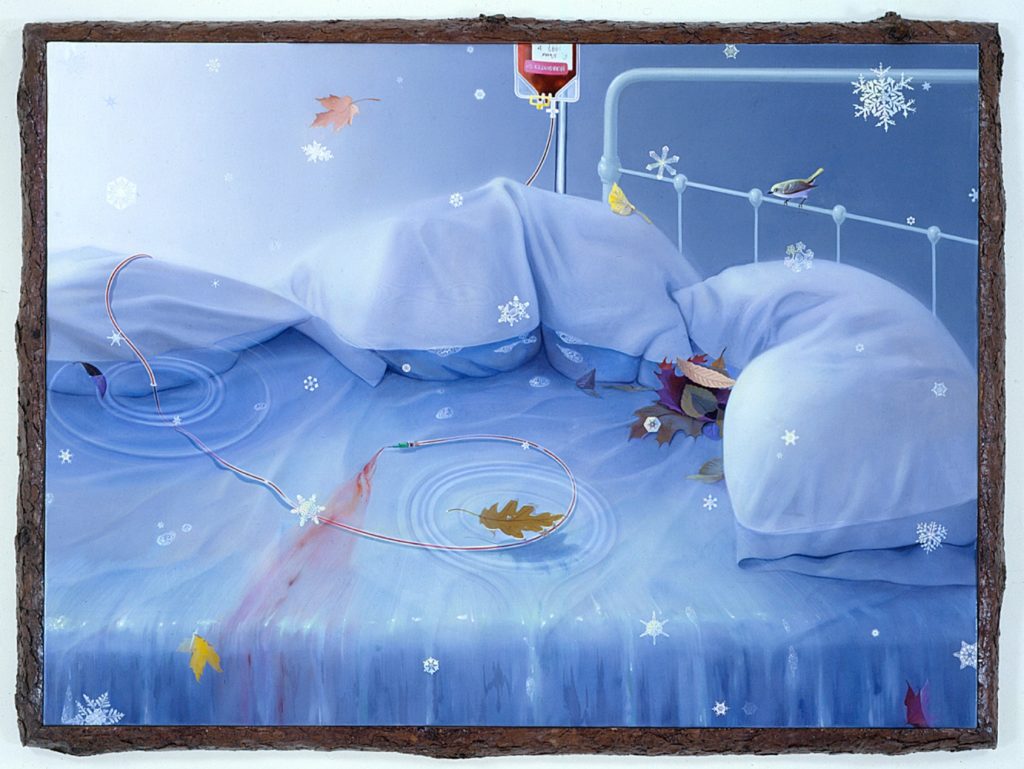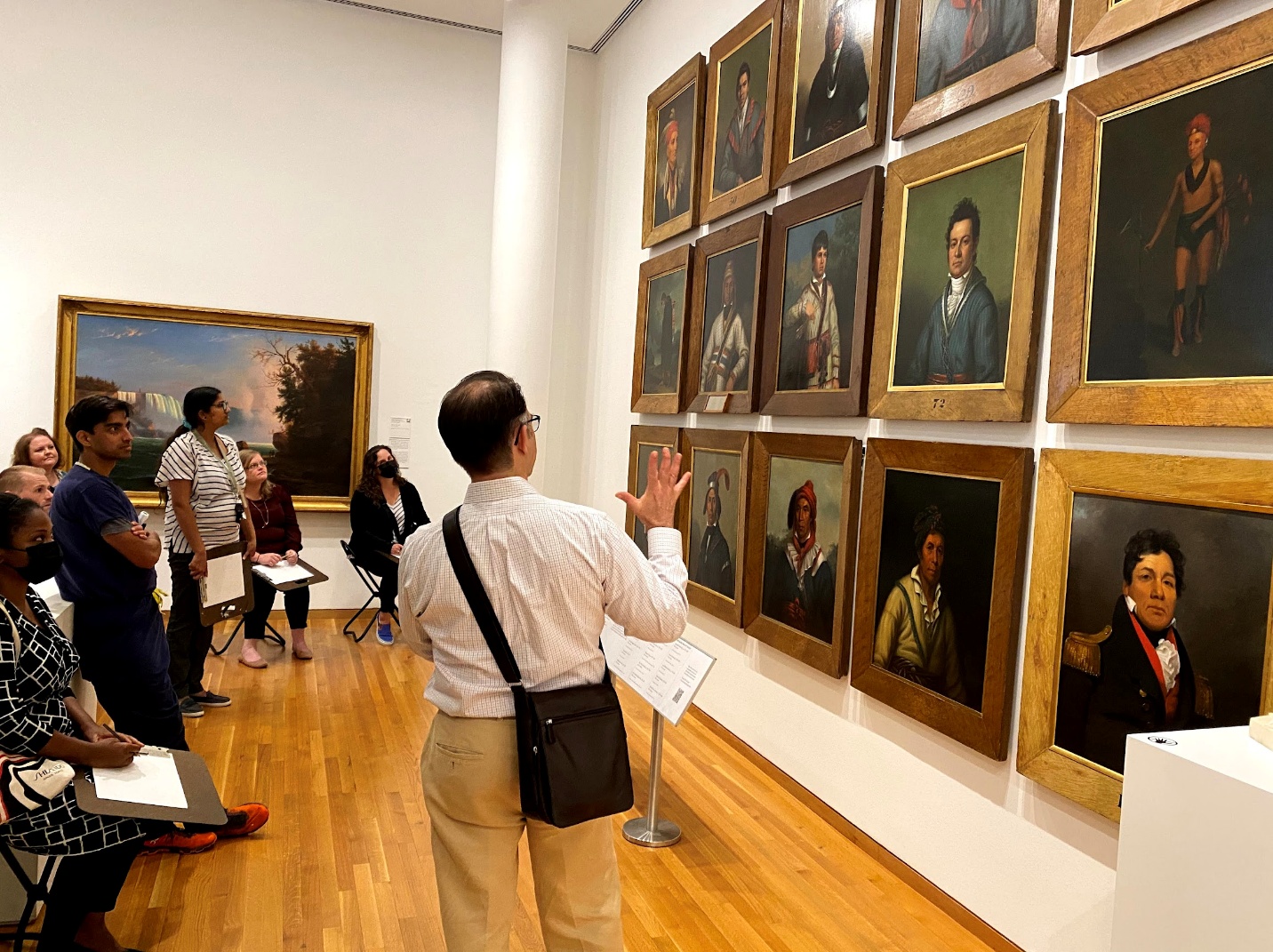We use art as “third things” to foster deep discussion on a variety of topics pertinent to healthcare (1). More specifically, the third thing is an object that displaces emotions and cognitions so learners can access complex emotional thoughts and even “taboo” topics through a work of art. We will provide examples below to show the power of the third thing in healthcare education.

While there is no one way to do arts-based teaching, most experiences use a form of pedagogy called Visual Thinking Strategies (VTS). In a VTS session, a facilitator works with a group of learners to discuss and interpret an image – in our case a work of art. As an example, we will use the image below:
There are three central questions that are used to guide a conversation using the VTS method:
- What’s going on in this image?
- What do you see that makes you say that?
- What more can we find?
The first question asks the learner to describe in their own words what they’re seeing. The second question asks the learner to ground their interpretation in visual evidence. The third question invites more perspectives from the learner or other learners to gain richness and depth in the conversation.
For example, regarding the image above, a response to the first question could be “I see a bag of blood pouring out on a bed” or something more interpretive/speculative like “I see a hospital bed of someone who has died.” The facilitator would then ask what the learner sees that leads them to suggest their inferences. The art of VTS facilitation is paraphrasing learners’ comments and building connections between multiple learners’ interpretations to create themes during the conversation.
We suggest selecting a work of art that is complex and nuanced enough to sustain a conversation for at least 15 minutes. You can work with your museum educator to select a work that can fit with your objectives for the session. Using the example of the third thing, we find learners feel more comfortable disclosing challenging professional situations – such as processing the death of patients, clinician-patient relationships, self-care, and burnout – when discussed through a work of art in a supportive environment.
We find VTS to be a foundational pedagogy for arts-based healthcare education, and in our experience, we begin all coursework with several VTS exercises to acquaint learners with close observation of complex visual information.
When curating a VTS experience, we recommend having at least four learners in order to garner multiple perspectives, choosing an image large enough that the entire group can see, having stools so learners can sit and contemplate the image, and having a learner to facilitator ratio of around 15:1 so the facilitator can artfully engage with the group.
At the end of a VTS session using a single work of art, facilitators may choose to share some information about the work of art or artist that they think may tie-in with the session’s learning objectives. For example, you may consider sharing that the above painting is by Frank Moore and is titled “Patient.” You may also consider sharing that Frank Moore lived with AIDS and much of his work addressed problems with the healthcare system. What you do not want to do is cause premature closure or having “the right answer” explaining the meaning of the work of art. What you share with the group needs to sustain the art’s intrigue and evoke ongoing wonder. You may work with your museum educator to determine the amount of factual content you want to provide with your learners.
Though VTS’ three questions are easily learnable, becoming a skilled facilitator often takes years of training and practice. For this reason, we recommend formal training in VTS (this would be a link) before facilitating a session without the support of a museum educator.
Images from VTS exercises at Emory

